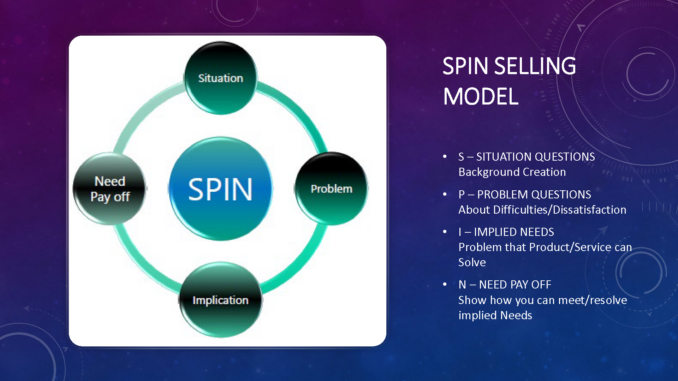
SPIN Selling is a sales technique developed by Neil Rackham based on extensive research into high-value, complex sales. The method is named after four types of questions that effective salespeople use during the sales process to understand customer needs better and guide them toward a purchase. “SPIN” stands for:
Situation: These questions are practical tools that gather background information about the customer’s current situation. The aim is to equip you with a clear understanding of the prospect’s environment without spending too much time at this stage. Example: “How are you currently handling X?”
Problem: Problem questions explore the challenges, difficulties, or dissatisfactions that the prospect is experiencing. The goal is to uncover the issues that the customer faces.
Example: “What issues are you facing with your current solution?”
Implication: These questions delve deeper into the consequences of the problems. By exploring the implications, the salesperson helps the prospect understand the severity of the situation and the potential risks of inaction, thereby influencing their decision-making process. Example: “How does this issue affect your overall productivity?”
Need-Payoff: These questions encourage the prospect to consider the benefits of solving the problem. They focus on addressing the issue’s value and payoff, helping the customer visualize how the solution can benefit them.
Example: “How would solving this problem improve your business operations?”
SPIN Selling is highly effective in complex B2B sales or situations where a solution requires a longer sales cycle. It’s not just about selling, but about building relationships and understanding customer needs, which can make your interactions more engaging and meaningful.
